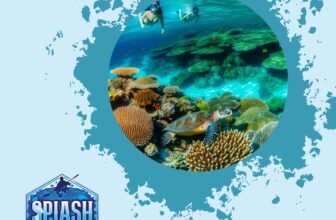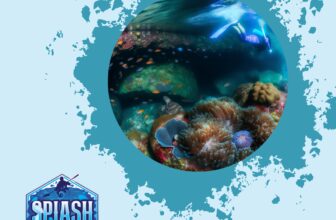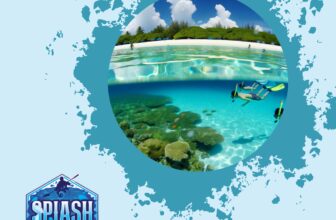
Diving opens a window into a world teeming with life, complexity, and wonder. Among the many fascinating aspects of marine ecosystems are the symbiotic relationships that exist between different species. Understanding these underwater partnerships can enhance your diving experience, giving you a deeper appreciation for the intricate balance that sustains ocean life. This guide is crafted for beginner divers and those who are just starting to delve into the world of marine biology.
Introduction
Hey there, fellow ocean enthusiast! Whether you're just starting out or considering the plunge into diving, you're in for a treat. The underwater world is a kaleidoscope of life and activity, with many species living in close and sometimes surprising partnerships. These are known as symbiotic relationships, where different marine creatures interact in ways that can be mutually beneficial, neutral, or even detrimental to one party.
Understanding these marine collaborations isn’t just a nerdy pursuit—it's practical. As a diver, knowing about these relationships can really amp up your diving experience. Imagine spotting a clownfish and knowing it’s not just hiding but living in harmony with an anemone! Plus, this knowledge helps you become a more mindful observer, contributing to marine conservation efforts by respecting and protecting these crucial interactions.
In this guide, we’ll give you a quick rundown on what marine symbiotic relationships are and why they matter. We’ll also arm you with tips to observe these underwater alliances during your dives. So get ready to dive deeper, both literally and figuratively, into the wonders of the ocean.
What is Symbiosis?
Before you plunge into the depths and start exploring the vibrant underwater world, it's essential to understand a key concept: marine symbiotic relationships. These relationships involve two different species living in close proximity to each other, where at least one party benefits. Symbiosis is all about survival, adaptation, and sometimes, cooperation on a level that's often quite surprising.
Types of Symbiosis:
-
Mutualism:
- Definition: In this type of relationship, both species benefit from their interaction.
- Example: The classic case is the clownfish and the anemone. The clownfish gets protection from predators by hiding in the anemone's venomous tentacles, while the anemone gets food scraps from the clownfish and better water circulation due to the fish's movement.
-
Commensalism:
- Definition: Here, one species benefits while the other is neither helped nor harmed.
- Example: Think of barnacles hitching a ride on the back of a whale. The barnacles benefit by being transported to nutrient-rich waters, while the whale remains unaffected.
-
Parasitism:
- Definition: In this less-friendly relationship, one organism benefits at the expense of the other.
- Example: Consider the isopods that live off the blood of fish. The isopod thrives, but the fish suffers, often weakened by the constant loss of blood.
Understanding these types of symbiosis will give you a deeper appreciation for the complexities of marine life. The next time you're out diving, keep an eye out for these fascinating relationships. It'll make your underwater adventure not just more enriching but also more enlightening.
Why Symbiotic Relationships Matter
Symbiotic relationships are not just cool tidbits of marine life; they play a crucial role in keeping underwater ecosystems balanced. These interactions, whether they are mutualistic, commensal, or parasitic, help maintain the delicate web of life that exists beneath the waves. For divers, understanding these relationships can make your underwater explorations more intriguing and meaningful.
Symbiotic relationships are excellent indicators of ecosystem health. For example, the presence of cleaner fish, which engage in mutualistic relationships by removing parasites from their host fish, often suggests a well-balanced reef. If these interactions are missing or disrupted, it could be a sign of underlying problems in the ecosystem, such as pollution or overfishing.
As a diver, keeping an eye out for these interactions can provide valuable clues about the state of the environments you're exploring. Noticing a healthy, active anemone hosting a clownfish or spotting the symbiotic dance of shrimp and gobies can tell you a lot about the health of the reef. By being observant, you can become a better advocate for ocean health and contribute to conservation efforts through citizen science projects where divers report their findings.
In essence, the health of symbiotic relationships often mirrors the health of the ecosystem. So next time you dive, pay attention to these fascinating interactions—they're not just nature's quirks; they're essential cogs in the marine machinery.
Mutualism: Win-Win Situations
Mutualism is a form of symbiotic relationship where both species involved gain benefits. In marine environments, mutualistic relationships are abundant and often highly specialized, showcasing nature's ingenuity. For beginner divers, recognizing these mutualistic partnerships can turn a routine dive into a fascinating exploration of life beneath the waves.
Take, for example, the iconic relationship between clownfish and sea anemones. Clownfish find safe harbor among the anemone's venomous tentacles, which deter predators. In return, clownfish offer the anemones improved water circulation through their movements and provide them with nutrients through waste. To observe this relationship, look for vibrant, bobbing clownfish within anemones' tentacled homes. Remember: maintain a respectful distance and avoid touching, as these organisms are delicate and crucial to each other's survival.
Another striking example is cleaner fish and their hosts. Cleaner fish, like the blue-streaked cleaner wrasse, establish cleaning stations where they remove parasites and dead skin from larger fish, known as "clients." This provides nourishment for the cleaner fish and health benefits for the clients. While diving, you can spot these stations by watching for larger fish hovering near coral outcrops or cleaning stations, allowing the diminutive cleaner fish to work their magic. Exercise patience and avoid sudden movements to not disrupt this cooperative behavior.
For divers keen to observe mutualism safely, follow these tips:
- Stay Calm and Steady: Marine life is less likely to be startled if you move slowly and breathe steadily.
- Keep Your Distance: A good rule of thumb is to stay at least one to two meters away from the organisms you're observing.
- Avoid Touching: Even a light touch can harm delicate marine animals or disrupt their symbiotic relationships.
- Time Your Dive: Early morning or late afternoon dives often yield the best chances to observe active mutualistic behavior.
By keeping these tips in mind, you'll be able to witness the intricate dance of mutualism that helps maintain the health and balance of ocean ecosystems. As you dive, observe these relationships with a keen eye and a respectful heart, adding a rich layer of understanding to your underwater adventures.
Internal Link: Diving
Commensalism: One Benefits, The Other Unaffected
Commensalism is a type of symbiotic relationship where one organism benefits while the other remains unaffected. This non-intrusive form of partnership is quite common in marine environments, and recognizing these subtle interactions can add an extra layer of intrigue to your dives.
Defining Commensalism
In the context of marine life, commensalism involves one species gaining a benefit—like food, shelter, or transportation—without harming or benefiting the other. Unlike mutualism, there’s no exchange of services; only one party reaps the rewards.
Examples of Commensalism
Barnacles on Whales
One classic example is barnacles on whales. Barnacles latch onto whales' skin, gaining:
- Mobility
- Access to a diversity of nutrients as the whale travels through various waters
The whale, meanwhile, doesn't seem to notice or be affected by its hitchhikers.
Remoras and Sharks
Another intriguing example is the relationship between remoras (suckerfish) and sharks. Remoras use a specialized disk on their heads to attach themselves to larger marine animals like sharks. This piggyback ride grants the remoras:
- Free transport
- Access to food scraps from the shark’s meals
While the shark swims on, undisturbed by its passenger.
Spotting Commensal Relationships During Dives
Looking to spot these natural hitchhikers during your dives? Here are some practical tips:
- Observation: Take your time to observe larger animals and their immediate surroundings. The commensal partners are often smaller and might require a closer inspection to spot.
- Behavior: Keep an eye out for any able-bodied creature that seems to be consistently close to another without engaging in aggressive behaviors.
- Tools: A good underwater camera with zoom capabilities or a pair of underwater binoculars can enhance your ability to spot these small, sometimes elusive hitchhikers.
Internal Link
For more about the different dynamics involving sharks, including the human impact on their populations, check out our article on Shark Finning: The Impact on Ocean Ecosystems and Dive Tourism.
By understanding and recognizing commensalism in action, you’ll gain a richer appreciation of the complex web of relationships that sustain marine environments. Happy diving, and keep your eyes peeled for those fascinating passengers of the sea!
Parasitism: One Benefits at a Cost to the Other
Parasitism in the marine world is a tough deal where one organism benefits while the other pays the price. It’s less charming than mutualism or commensalism, but it’s equally a part of the underwater environment you're exploring.
Take, for instance, isopods – those small crustaceans that latch onto the mouths or gills of fish. While the isopod gets an easy meal, the host fish suffers from reduced health and can even experience impaired growth or infection. Another example is the cookiecutter shark, a small but fierce predator that takes round plugs of flesh out of larger fish and marine mammals. The cookiecutter shark feeds efficiently without killing its host, but its method leaves painful wounds and potential infections.
As a diver, spotting these parasitic relationships can be enlightening. However, there are ethical considerations to keep in mind. Firstly, don't interfere or try to detach a parasite from its host. You may do more harm than good. Instead, observe and document these interactions from a safe distance, respecting the natural dynamics of the ecosystem. When you see a parasitic relationship, take note of the species involved and their behavior. Over time, this can contribute valuable information to marine biologists studying ecological health.
Keep your diving respectful and your curiosity sharp. Parasitism might not be pretty, but it’s an essential thread in the complex tapestry of ocean life.
Practical Dive Observations
Getting the most out of your dives involves more than just strapping on your gear and plunging into the water. Here are some crucial tips for identifying and documenting symbiotic relationships during your underwater adventures.
Tips for Identifying and Documenting Symbiotic Relationships
-
Slow Down and Observe:
- Take your time. Rushing through your dive means you might miss subtle interactions. Move slowly and let your eyes comb through the environment.
-
Bring a Dive Slate:
- A simple, waterproof notebook or slate can be invaluable for jotting down observations or sketching quick diagrams. Note the species involved in the symbiosis, their behaviors, and any unique characteristics.
-
Use a Good Dive Light:
- Even in bright daylight, a strong dive light can help you see the details of marine life interactions that are happening in darker crevices or under ledges.
- Buddy System:
- Make use of your dive buddy to have a second pair of eyes. Discuss what each of you observes during and after the dive.
Respecting Marine Life
Respect for marine life is paramount. Maintain an appropriate distance to avoid disturbing animals while observing their natural behaviors.
-
No Touching:
- Remember, touching marine life can cause stress or damage to the creatures and their habitat. Your role is that of an observer.
-
Mind Your Buoyancy:
- Good buoyancy control keeps you from inadvertently crashing into corals or other marine organisms. Practice makes perfect.
Tools and Techniques for Underwater Observations
-
Underwater Camera:
- An underwater camera can be a great tool for documenting what you see. Photos and videos allow you to review your observations later and share with other divers or marine biologists.
-
Magnifying Glass:
- A small, waterproof magnifying glass can help you get a closer look at smaller organisms and their interactions.
-
Guided Dives:
- Consider going on dives led by experienced guides who can point out relationships you might miss on your own. These guides often have extensive knowledge of the local ecosystem.
By honing your observational skills and using these practical tips, your dives will become richer and more educational experiences. You'll start to see the ocean not just as a stunning expanse of water but as a complex, interconnected web of life where relationships play a key role.
Dive safely, respect the marine environment, and let your curiosity lead the way.
Internal link: Scuba Diving
Ecosystem Balance and the Role of Symbiosis
Ecosystem balance in the ocean relies heavily on the intricate web of symbiotic relationships among its inhabitants. These interactions—whether they be mutualistic, commensal, or parasitic—are the glue that holds marine ecosystems together.
Types of Symbiotic Relationships
Mutualistic Relationships
For example, mutualistic relationships like those between clownfish and anemones or cleaner fish and their hosts are essential for both parties' survival.
- Clownfish and Anemones: Clownfish get protection from predators by living among the stinging tentacles of anemones, which in return receive nutrients from the waste of the clownfish.
- Cleaner Fish and Hosts: Cleaner fish get a meal by eating parasites off the host fish's body, which helps keep the host healthy.
This dynamic is vital for maintaining biodiversity and ensuring that various species can thrive together.
Human Impact on Symbiosis
Human activities can have a significant impact on these delicate relationships:
- Pollution
- Overfishing
- Habitat Destruction
Such activities disrupt the balance, often resulting in the decline of species that form these critical associations. For instance, the destruction of coral reefs impacts not just the corals but also the myriad of species that depend on them, disrupting mutualistic relationships that have developed over millennia.
Role of Divers
As divers, you have a front-row seat to observe and document these fascinating interactions. Your observations can provide valuable data to marine biologists working on conservation initiatives. Respecting marine life and keeping a safe distance is crucial; interference can stress animals and disrupt these critical relationships.
Conservation Efforts
Conservation efforts are paramount for maintaining the health of our oceans. Simple actions can make a huge difference:
- Participate in Beach Clean-ups
- Support Sustainable Seafood Choices
By understanding the role of symbiosis in ecosystem balance, you become a more informed diver, contributing to the protection and preservation of marine environments.
Be an Advocate
Remember, every dive is an opportunity to witness the wonders of symbiotic relationships and to become an advocate for the oceans. Your curiosity and respect can help keep these underwater communities thriving for future generations.
Internal link: Ocean Currents: How They Shape Marine Ecosystems and Affect Diving
Conclusion
Recapping what we've covered, understanding marine symbiotic relationships isn't just an academic exercise—it's a game-changer for your diving adventures. By recognizing these intricate partnerships, you'll open yourself to a much richer underwater experience. You'll start recognizing the clownfish darting among the anemones, the barnacles hitching a ride on a whale, and perhaps even a parasitic isopod clinging to a fish. Every dive will turn into a live documentary of nature's most fascinating collaborations.
Don't stop here. Keep your curiosity alive. The ocean is an endless canvas of wonders waiting for you to explore and understand. The more you learn, the more you'll appreciate the delicate balance that sustains this underwater world.
And always remember, responsible diving is the cornerstone of preserving these incredible ecosystems. Respect the marine life, maintain a safe distance, and adhere to ethical diving practices. Your actions count, not just for your safety but for the well-being of the marine world that fascinates us all.
Dive safely, and let every encounter with marine life be a moment of appreciation and awe.







